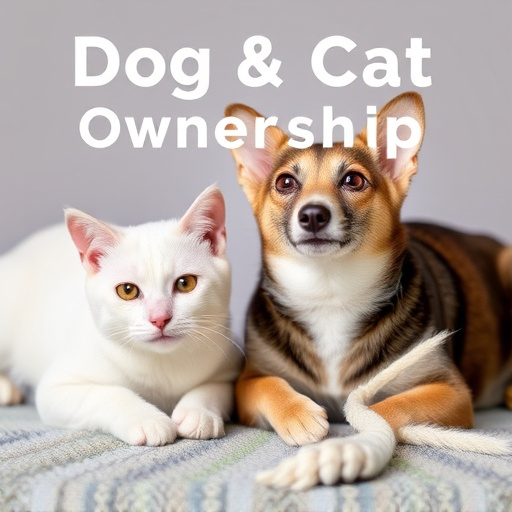Dog and cat ownership serves as a powerful catalyst for social connections within communities. Pets act as natural facilitators, encouraging neighbors to interact in shared spaces like dog parks or online forums, leading to meaningful conversations and friendships. These interactions foster a sense of belonging, promote understanding, and build inclusive networks centered around animal welfare, ultimately enhancing community unity and combating loneliness.
Caring for pets isn’t just about providing love and sustenance; it’s a powerful catalyst for enhancing social connections, creating communities, and fostering meaningful relationships. From local pet-focused events to daily care routines, dog and cat ownership serves as a unifying force that transcends age gaps. This article explores how pets act as social icebreakers, building bridges between individuals and strengthening bonds within communities. Discover the profound impact of shared responsibilities, intergenerational connections, and the countless success stories of friendships formed through our furry friends.
- The Role of Pets in Building Communities
- – How pet owners interact with each other
- – Local pet-focused events and groups
- Pets as Social Icebreakers
The Role of Pets in Building Communities

Pets, especially dogs and cats, play a pivotal role in fostering social connections within communities. Owning a pet encourages humans to interact with their neighbors as they walk their dogs or play with cats in shared spaces. This simple act of greeting fellow pet owners can lead to meaningful conversations, forming the basis of new friendships. For instance, a regular dog park visit becomes a social hub where residents connect, share stories, and even collaborate on community events.
Moreover, cat and dog ownership creates a sense of belonging and common ground. Neighbors who observe their peers interacting with pets are more likely to initiate conversations and form bonds. This can be particularly beneficial in diverse neighborhoods, promoting understanding and unity among residents from different backgrounds. Pets act as social catalysts, bringing people together and enriching the overall community experience.
– How pet owners interact with each other

Pet ownership, whether it’s a dog or cat, brings people together in unique ways. In public spaces like parks and walking trails, dog owners often form informal communities where they interact and bond over their shared love for animals. A simple “good morning” or exchange of tips on training can spark conversations that lead to lasting friendships. Similarly, cat owners gather at local pet stores or online forums to share stories, recommend products, and offer support, fostering a sense of community among otherwise strangers. These interactions create social connections that extend beyond the animal-human bond, encouraging regular meetups and fostering a sense of belonging.
– Local pet-focused events and groups

Pet ownership, whether it’s a dog or cat, can serve as a powerful icebreaker and catalyst for new friendships. Local communities often host pet-focused events like dog walks, adoption drives, and feline gatherings, providing excellent opportunities for owners to connect. These events create an inclusive environment where shared interests in animal welfare and companionship transcend social barriers.
Joining pet groups allows owners to build upon these initial connections. Through regular meetups, playdates, or training sessions, strong bonds form among dog and cat lovers. Such interactions foster a sense of belonging and can even lead to the creation of pet-centric support networks.
Pets as Social Icebreakers

Pets often act as unexpected social icebreakers, serving as a common ground that fosters connections among people. Whether it’s a stroll in the park with a dog or a casual chat while cleaning a cat’s litter box, pet ownership naturally encourages interactions and can help ease social situations. This is especially true for individuals who might feel isolated or find it challenging to meet new people. Owning a dog, for instance, can lead to more conversations while walking in the neighborhood, creating opportunities to connect with neighbors or fellow dog owners. Similarly, cat ownership can spark discussions at local pet stores or during playdates at community cat cafes, helping to build social networks and combat feelings of loneliness.
Pet ownership, whether it’s a dog or cat, can be a powerful catalyst for fostering social connections within communities. By engaging in activities like local pet walks, adoptions events, and online forums, owners create opportunities to interact with fellow enthusiasts, building bonds over shared love for animals. These interactions often lead to lasting friendships, as people connect through their pets’ unique personalities and the common goal of providing them with loving care. So, whether you’re a dog or cat owner, embracing pet-focused social scenes can enrich your life and bring new friends into your sphere.
